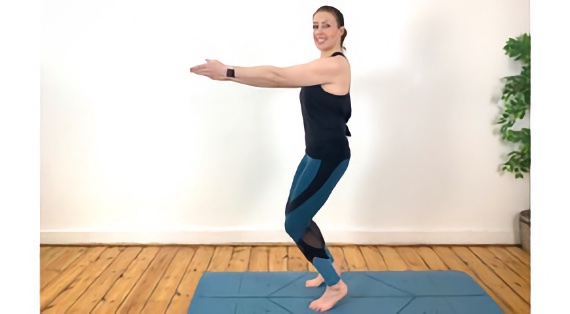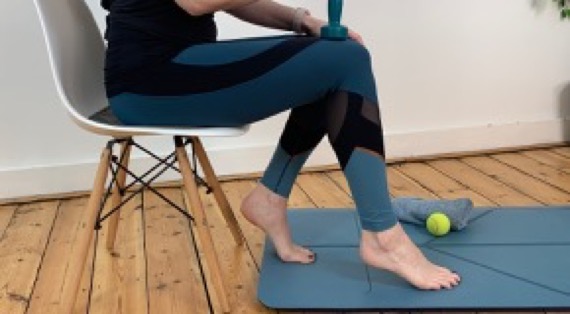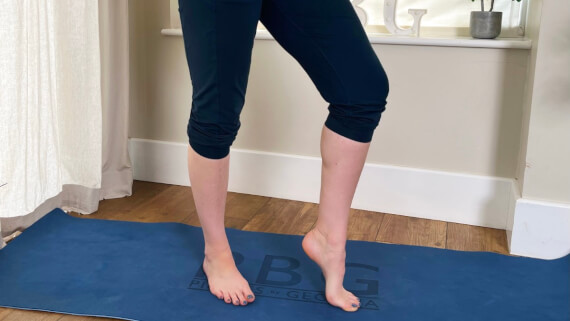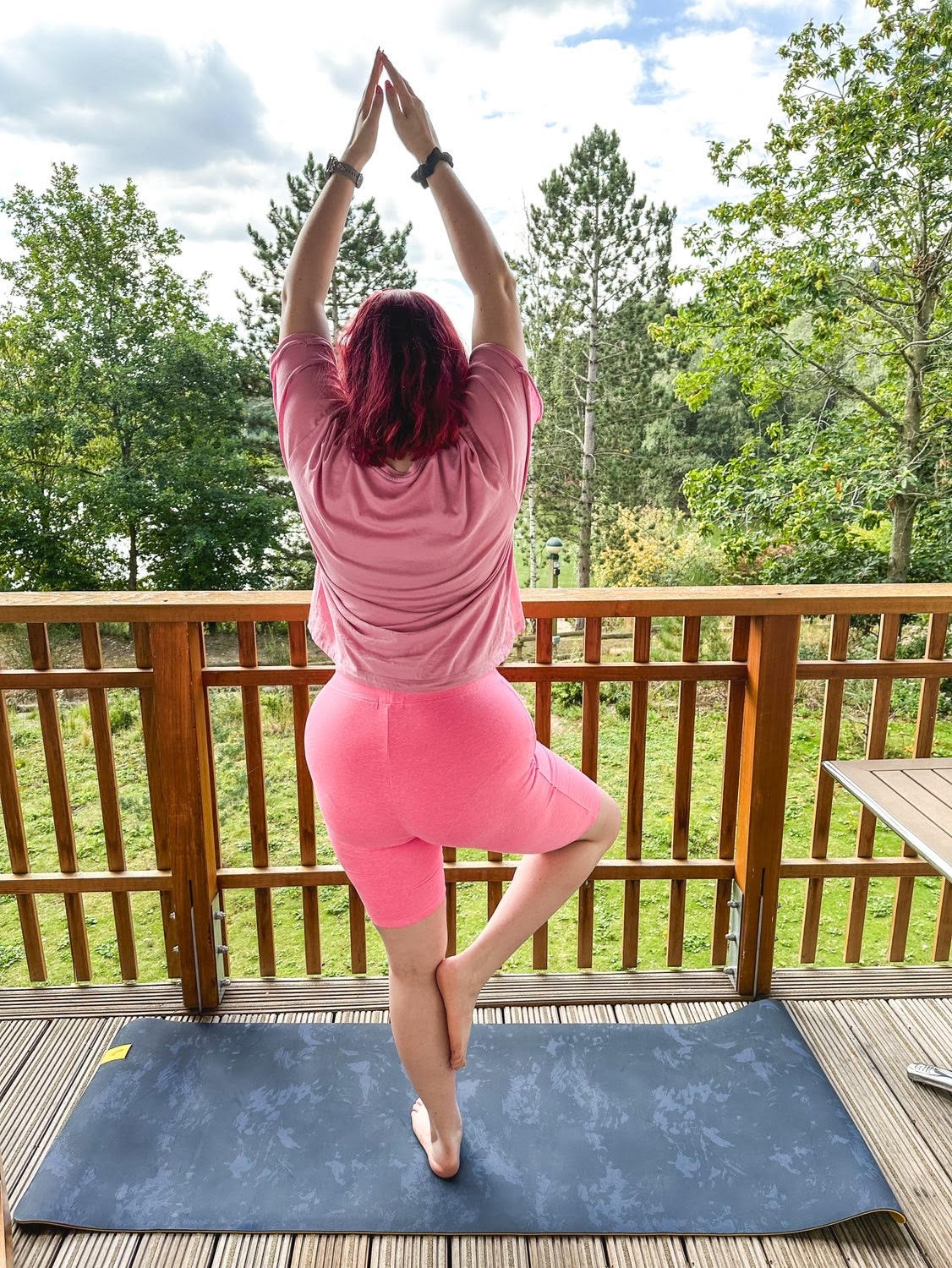Ankle Pain
The Ankle and Achilles Tendon
The ankle connects the bones in the lower leg to the foot. It can be divided into two parts: the upper and lower ankle. The upper ankle allows us to move our feet upwards (dorsiflexion), downwards (Plantar Flexion), and a little to the side. It is made up of three bones: tibia, fibula and talus. The lower ankle connects the anklebone and the tarsus (midfoot and hindfoot) plus the heel bone. It does not move as much as the upper ankle. The lower ankle allows the foot to tilt to the side a bit and also turn inwards (supination) and outwards (pronation).
Because the ankle joint is made up of many bones, there are also a lot of ligaments to stabilize and strengthen it. Ankle ligaments are tough, elastic bands of connective tissue that connect bones in the joint. Three ligaments run along the outside of the ankle, and one ligament (consisting of four bands of tissue) runs along the inside of the ankle.
When we run and jump the ankle joint copes with force and load equivalent to several times your body weight. If the strain is too big, the ligaments might overstretch or tear (rupture). The most common ankle injury happens when a foot lands in an awkward position and bends outwards. This can injure the outer ankle ligaments. Injuries to the ligament on the inner side of the ankle are less common. Because the lower ankle is more stable than the upper ankle, ankle injuries such as strains, sprains and fractures nearly always only affect the upper ankle.
The Achilles tendon is a band of tissue that connects calf muscles at the back of the lower leg to your heel bone, it is the thickest and strongest tendon in your body. We use it when we walk, run, jump or push up on our toes.
All about Ankle Pain
Types of Ankle Pain
- Ankle sprain: Occurs when you roll, twist or turn your ankle in an awkward way overstretching or tearing the ligaments. The severity of a sprain can vary greatly depending on the number of ligaments involved and the extent to which the ligaments are torn.
- Achilles tendinitis: Achilles tendinitis is an overuse injury of the Achilles tendon. The Achilles tendon weakens with age, which can make it more susceptible to injury — particularly in people who may participate in sports only on the weekends or who have suddenly increased the intensity of their running programs.
- Achilles tendon rupture: Can occur when your foot is suddenly forced upwards or you push off the ground with force, like when you jump - the tendon can tear ‘rupturing’ and sometimes spring up into the calf.
- Ankle fractures: A broken or fractured ankle is an injury to the bone/s. Common causes are a twisting injury from a simple misstep or fall, or from direct trauma such as during a car crash.
- Bursitis: Bursae are small, fluid-filled sacs that act like cushions within joints throughout the body to reduce friction and prevent damage to the tissues during movement. They're typically where bones, tendons, and muscles rub against one another. Ankle bursitis is when one or more of the bursae in the ankle become inflamed or irritated due to overuse or injury.
- Arthritis: Occurs when cartilage (tissue in joints that cushions bones) breaks down. The breakdown causes bones to rub together. In the ankle, osteoarthritis could cause your ligaments to become weaker, which could put more strain on the cartilage. You might also find the muscles around your ankle become weaker over time, and it may feel painful to walk or put weight on your ankle.Injuries and overuse can lead to arthritis.
- Gout: Gout is caused by the buildup of uric acid in the bloodstream, which is a waste product produced by the body when it breaks down purines. Purines are found in many foods, including red meat, seafood, and alcohol. When the body produces too much uric acid or cannot eliminate it efficiently, the uric acid crystals accumulate in the joints, leading to an inflammatory response. Gout in the ankle may also be caused by an injury or trauma to the joint.
Ankle Pain Symptoms
- Ankle sprain pain: Can be very painful and the discomfort does not always correlate with the magnitude of the injury. The ankle will be sore to bear weight on the affected foot usually with tenderness, swelling and bruising. There will be a restricted range of motion and a feeling of instability.
- Achilles tendinitis: Usually begins as a mild ache in the back of the leg or above the heel after running or doing sports. More-severe pain may occur after longer running, stair climbing or sprinting. There is often tenderness over the tendon and stiffness, especially in the morning.
- Achilles tendon rupture: Will cause a sudden, sharp and severe pain in the back of your leg, like you’ve been kicked or hit. You might also hear a snap or pop sound when it happens. Usually, the pain then settles into a dull ache. Although not everyone who ruptures their Achilles tendon feels pain. There is often swelling, bruising and difficulty walking. You will be unable to lift up your heel when standing on the leg. (This injury must be seen by a Surgeon as it often requires surgical intervention).
- Ankle fractures: Are usually very painful, swollen and may look different to your non injured side. Fractures often hurt to weight bear through and feel difficult to move. You may also have a high temperature and feel hot and shivery. An X-ray is required to diagnose a fracture.
- Bursitis: When the bursae in the ankle become irritated or inflamed, it can cause pain, swelling, and difficulty moving the ankle.
- Arthritis: Leads to swelling, pain and stiffness in the ankle and the joint may appear bigger than usual. You may have an achy feeling in your feet, especially if you’ve been particularly active or worn high heels. Some people also get pain in their feet at night.
- Gout: Gout is a sudden and intense pain, redness, heat and swelling in the affected joint. The pain can be so severe that even the weight of a bedsheet can cause discomfort.
Ankle Pain Treatment
Early Advice - RICE
- Rest: Activity Modification - Crutches may be useful for a few days if ankle are sore to load through.
- Ice: If swollen and inflamed - apply a covered ice pack to the injury for up to 15 minutes 2 or 3 times a day.
- Compress: Compress with ankle supports such as Tubigrip.
- Elevate: Elevation minimises swelling. Raise your ankle up higher than your heart.
Progress
Stretch the calf whilst sitting - see QuickFix video for demonstrations.
Try to move the ankle regularly and when you feel able try to walk focusing on placing your heel down first as your foot strikes the floor.
Do watch the PBG information class on ankle pain and then try the QuickFix exercise class to learn how to safely mobilise and stabilise the ankle.
Free Class: Quick Fix for Ankle Pain

 Physio Tip!
Physio Tip!
Be patient!
I know its frustrating waiting for injuries to recover and ankles can take 3-6 months to heal well. Be consistent with your rehab and ensure you incorporate balance, resistance and foot stability exercises into your workouts.
Alert!
Contact your healthcare provider if:
- You have severe ankle pain
- You feel faint, dizzy or sick from the pain
- Your ankle or foot has changed shape or is at an odd angle
- You heard a snap, grinding or popping noise at the time of injury
- You are not able to walk.
These might be signs of a broken ankle or more serious injury.










